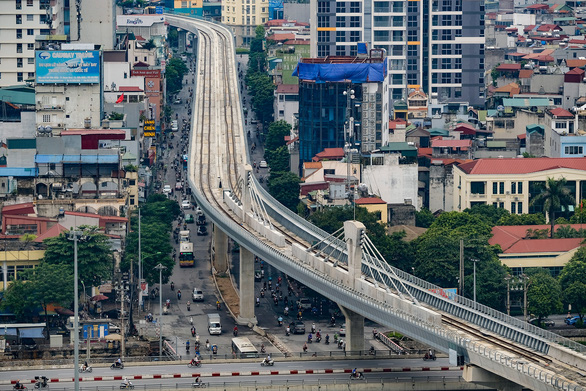The Vietnamese government is expected to mobilize total funds of more than VND644,515 billion (US$26.41 billion) in 2023 to make up for a central state budget deficit and pay other expenditures, according to a government report to the legislature.
In its report recently submitted to the lawmaking National Assembly, the national government elaborated on the country’s public debts and set out a fund mobilization plan for 2023.
Among the total mobilization amount, more than VND430,500 billion ($17.64 billion), or around two-thirds of the total borrowing, will be used to offset the central budget overspending, VND190,515 billion ($7.8 billion) will be for repayment of loan principals, and the remaining VND23,500 billion ($963.92 million) for re-lending.
The fund mobilization plan will be funded by revenue from government bonds, domestic borrowings, official development assistance (ODA), and preferential foreign loans, among others, the report said.
It is expected that the government's direct debt repayment in 2023 is about VND293,405 billion ($12 billion), including the aforementioned principals of VND190,515 billion and the interest of about VND102,890 billion ($4.2 billion).
The government will not provide new guarantees for new programs and projects during 2023, and the balances of domestic loans and foreign borrowings will be about VND10,073 billion ($413,7 million) and VND116,564 billion ($4.78 billion) by the end of next year.
It is expected that by the end of 2023, the government's direct debt repayment will not exceed the ceiling rate of 25 percent of the state budget as prescribed by the National Assembly.
The government will complete the legal framework related to public debts and state coffers to improve the public debt management as well as closely control contingent debt obligations in accordance with international practices, according to the report.
It will also remove obstacles to disbursement of public investment capital and apply a flexible fiscal policy to create more resources for the country’s program for socio-economic recovery and development.
In addition, the central government will amend related mechanisms and policies to allocate a part of the increase in budget revenue to repay loan principals, thereby reducing public debt burdens and easing pressure on the government's direct debt repayment in the medium and long terms.
For the whole of 2022, the government’s total mobilized fund is estimated to reach VND619,492 billion ($25.46 billion), including mainly domestic loans, of which 92 percent comes from government bonds, the report said.
The government’s total debt repayment by the year-end is projected to be VND324,583 billion ($13.34 billion), including VND294,300 billion, or 98 percent, in direct debt repayment.
Government-guaranteed debts continued its strong downward trend during the year, with the debt-to-GDP ratio dropping from 8.8 percent in 2015 to about 3.2 percent in 2022, the government reported.
So far this year, all public debt safety indicators have continued to be strictly controlled based on the limits approved by the National Assembly, thereby ensuring national finances, securing public debt, contributing to the consolidation of sustainability of fiscal policy, and enabling proactive responses to macro risks, the report said.
However, due to different reasons, the disbursement of public investment capital has not met the requirements and progress, especially for ODA, and is expected to meet only 65 percent of the year’s plan.
By September 2022, nine local administrations and many units from six ministries and other agencies had proposed to return the public investment capital allocated to them from the state budget for 2022, with the total amount returned reaching around VND11,639 billion ($477.69 million).
Like us onFacebook or follow us onTwitter to get the latest news aboutVietnam!


















































